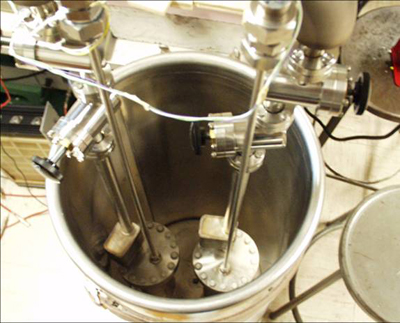Sunday, May 25, 2008
Cold Fusion - is it now a reality?
Cold fusion, the act of producing a nuclear reaction at room temperature, has long been relegated to science fiction after researchers were unable to recreate the experiment that first "discovered" the phenomenon.
But a Japanese scientist was supposedly able to start a cold fusion reaction earlier this week, which—if the results are real—could revolutionize the way we gather energy ; and possibly release us from the currently privatized, corporate-ran power grid.
Yoshiaki Arata, a highly respected physicist in Japan, demonstrated a low-energy nuclear reaction at Osaka University on Thursday. In front of a live audience, including reporters from six major newspapers and two tv studios, Arata and a co-professor Yue-Chang Zhang, produced excess heat and helium atoms from deuterium gas.
Arata used pressure to force deuterium gas into an evacuated cell that contained a palladium and zirconium oxide mix(ZrO2-Pd). Arata said that the mix caused the deuterium's nuclei to fuse, raising the temperature in the cell and keeping the center of the cell warm for 50 hours.
Arata's experiment would mark the first time anyone has witnessed cold fusion since 1989, when Martin Fleishmann and Stanely Pons supposedly observed excess heat during electrolysis of heavy water with palladium electrodes. When they and other researchers were unable to make it work again, cold fusion became synonymous with bad science.
But the method Arata showed was "highly reproducible," according to eye witnesses of the event. If nobody calls this demonstration out as a sham, Arata might have finally found the holy grail of cheap and abundant energy—nuclear power, without its destructive heat.
The successful commercialization of fusion energy (which could be realized by the middle of next century) could ultimately change the overall pattern of electricity generation -- as fusion power plants replace those now fueled by nuclear fission and fossil fuels.
Because fusion power plants would not produce air pollutants that contribute to acid rain and that may contribute to global climate change, they could minimize the environmental risks associated with the burning of fossil fuels and could substantially decrease demand for premium hydrocarbon fuels.
Further, because fusion power plants would contain only small quantities of fuel at any time, they could eliminate the potential for runaway reactions that might lead to accidents. The development of low-activation materials or advanced fuel cycles for fusion reactors could make the amounts of high-level radioactive waste that result from fusion-produced energy far smaller than those produced by fission reactors -- thus simplifying waste disposal problems.
Following the announcement of "cold fusion" in March 1989, researchers throughout the world, including those at Department of Energy laboratories, raced to verify the claims and to understand the underlying phenomena. Claims of scientific discovery require independent verification to establish a basis for understanding the underlying scientific phenomena and to explore the prospects for technology development. Throughout history, scientific advances have been subjected to, and have successfully withstood, this level of scrutiny. After exhaustive research, reports of "anomalous excess energy" and "anomalous nuclear effects" associated with the "cold fusion" claims have not been substantiated.
Research interest in "cold fusion" has dwindled dramatically since 1989. The most recent information on the disfavor into which the field of "cold fusion" has fallen comes from the New York Times website. On August 26, 1997, it was reported that the government of Japan said that it would terminate its research on cold fusion, which had failed to confirm that the phenomenon exists. It went on to state that "most governments and scientists in the United States and Europe had dismissed the concept as an illusion."
An extensive body of data and information on "cold fusion" resulted from the research following the March 1989 announcement. This information appears in scientific journals as well as the technical and popular press. Several books were published on the subject. Many consider the book "Bad Science -The Short Life and Weird Times of Cold Fusion," by Gary Taubes, to provide an accurate, comprehensive account of the history of "cold fusion."


